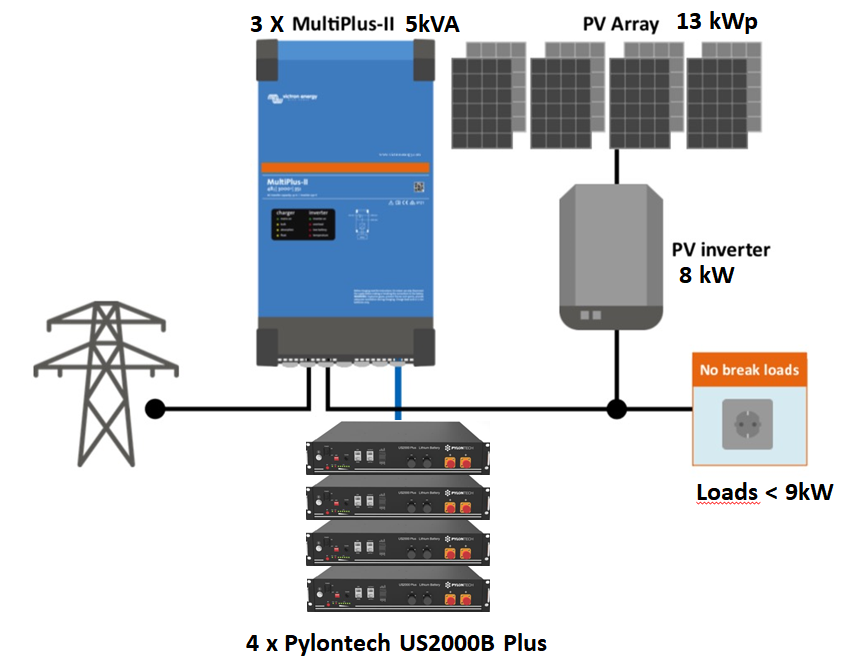Hi,
I am planning to install a ESS system according to the simplified schematic below combining 3 x Multiplus 5000VA for timeshifting energy and occasional backup duty. I hope I have gotten it right!
So my questions are,
1. What is the minimum battery requirement with Pylontech US2000 Plus batteries for this system? The Victron guide on Pylontech only covers off grid use which is more demanding compared to ESS. A breakdown of the requirement would also really help so I can think for myself next time :) Inrush currents have been mentioned before but I cannot find any numbers to base my decision on.
2. Can I add more US2000 Plus modules several years later even if they have different state of health?
3. Can I add other battery types in the same installation?

Regards,
Sven F
